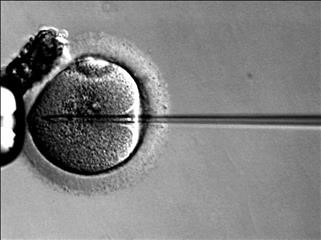The Infertility Organization
Unexplained Infertility for 2 Years
We have the complete source for complete info and resources for Unexplained Infertility for 2 Years on the Internet.
In most cases, surgery can be performed to either reverse these blockage or to retrieve sperm directly from the epididymis and testicles. Contents Definition[edit] "Demographers tend to define infertility as childlessness in a population of women of reproductive age," whereas "the epidemiological definition refers to "trying for" or "time to" a pregnancy, generally in a population of women exposed to" a probability of conception.[8] Currently, female fertility normally peaks at age 24 and diminishes after 30, with pregnancy occurring rarely after age 50.[9] A female is most fertile within 24 hours of ovulation.[9] Male fertility peaks usually at age 25 and declines after age 40.[9] The time needed to pass (during which the couple tries to conceive) for that couple to be diagnosed with infertility differs between different jurisdictions.
The Relationship of Abnormal Semen Values to Pregnancy Outcome. (PDF, 770 KB) Chapter 10 from textbook, 1992. The fertilized eggs, now embryos, are allowed to grow and develop in culture media for typically 3 to 5 days. A small incision is made in the abdomen, and a thin, flexible microscope with a light at the end, called a laparoscope, is inserted through it. ART includes all fertility treatments in which both eggs and sperm are manipulated. The success of the procedure is related to the diameter of the hydrosalpinx and to the damage to the cilial epithelium.
Here are Some More Info on Infertility Groups

More Info Around Unexplained Infertility for 2 Years
Embryos transfer is performed in the office under abdominal ultrasound guidance using a small, soft, sterile and flexible catheter. Women in group III can conceive only with oocyte donation and in vitro fertilization. Controversies in OB/GYN: Is Varicocelectomy Useful for Treatment of Male-factor Infertility? (PDF, 4 MB)Contemporary OB/GYN, 2001.
Much more Resources For Infertility Groups
Surgical Intervention Uterine anomalies can be corrected through operative hysteroscopy under general anesthesia or conscious sedation. [116] Ideally, the procedure should be performed during the early follicular phase and under laparoscopic surveillance to decrease the risk of uterine perforation. The introduction in 1990 of a laparoscopic clip applier with twenty automatically advancing clips (rather than a single load clip applier that would have to be taken out, reloaded and reintroduced for each clip application) made general surgeons more comfortable with making the leap to laparoscopic cholecystectomies (gall bladder removal).
Much more Resources For Infertility Groups
An obstruction can occur anywhere in the plumbing between the testicles and the penis. Patients present with oligospermia but have LH levels within the reference range. Secondary infertility When a woman is unable to bear a child, either due to the inability to become pregnant or the inability to carry a pregnancy to a live birth following either a previous pregnancy or a previous ability to carry a pregnancy to a live birth, she would be classified as having secondary infertility. This can help a man who cannot ejaculate normally, for example, because of a spinal cord injury. Microsurgical Solutions to Male Infertility. (PDF, 2 MB) Contemporary OB/GYN, 2005. Nonliquefication of the semen can be differentiated from benign hyperviscosity by a normal postcoital test finding. Treatment of Secondary Amenorrhea and Oligo-ovulation Once the diagnosis is established and any other endocrinopathy has been excluded, the ovulation induction agent of choice depends on a functioning hypothalamic-pituitary-ovarian axis. The sperm is washed in a fluid and the best specimens are selected. Advances in assisted reproductive technologies, such as IVF, can offer hope to many couples where treatment is available, although barriers exist in terms of medical coverage and affordability. Conditions including PCOS, the presence of excess prolactin, or premature ovarian failure can create ovulation disorders. Tubal occlusion According to other research, fallopian tube disorders lead to between 35 and 40 percent of infertility cases. This results in normal or enhanced follicular recruitment without the risk of multiple ovulation and ovarian hyperstimulation syndrome. IUI is more commonly done when the man has a low sperm count, decreased sperm motility, or when infertility does not have an identifiable cause. The optimum fertile period is around 23 years of age when only 5% of women have issues getting pregnant.
Previous Next
See also
Infertility Wikipedia
Shah Hospital - Infertility & Laparoscopic Center Ludhiana Punjab
Best Infertility Supplements